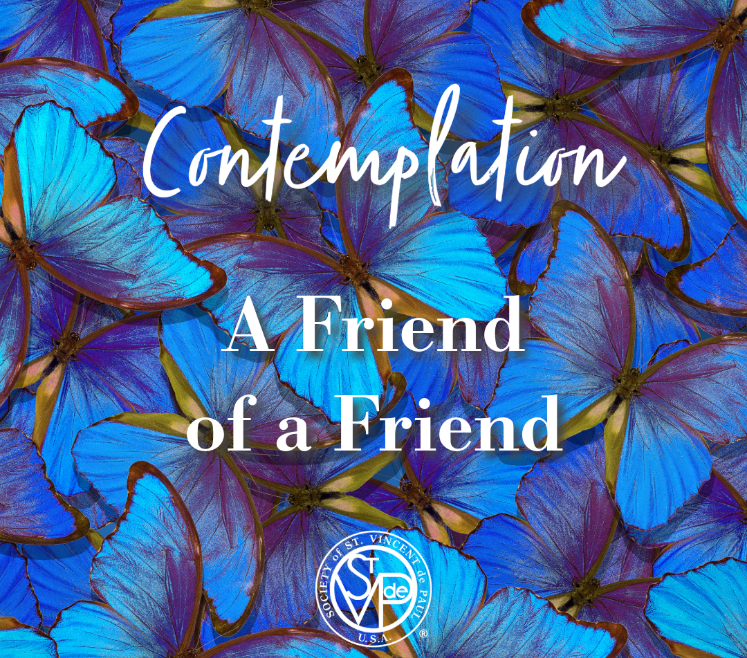Amélie Ozanam, Blessed Frédéric’s widow, had a brief invocation, or perhaps a motto, that she often added to notes and letters that she wrote. It was “et sub cruce, Hozanna!”, meaning “and under the cross, Hozanna!” in Latin. This was a play on her maiden name, Soulacroix, which is French for “under the cross,” along with her married name, Ozanam, which is from the Hebrew, hoshi’a na, or hosanna. We sing praise under the cross!
For Vincentians, the idea of a life “under the cross” is central to understanding our vocation. Saint Vincent often reminded his followers of the importance of bearing their crosses, just as Christ had asked of all who wished to follow Him. For Vincent, our suffering, our challenges, our crosses, should be borne with happiness, because “He sanctifies souls by crosses, just as He has redeemed them by His own Cross.” [CCD IV:180]
As Vincent understood, we all have different crosses; some as simple as temptations or bad habits, some as serious as illness, addictions, or poverty. Whatever they may be, our crosses are not meant to defeat us. To give in to temptations, for example, is to attach ourselves to the worldly; to resist them, to bear the cross, is to remember the greater joy that awaits us in the next life. We should take comfort, then, in our crosses, and bear them willingly, even cheerfully. As St. Louise said, “your sufferings will be changed into consolation because of the crosses you are privileged to bear.” [SWLM, L.393]
Our crosses, in this sense, are an extension of Christ’s own cross, a share in His suffering, an invitation “to cooperate in all the great works,” Frédéric explained, “which can be done without us!” After all, he went on, Christ could have summoned “twelve legions of angels” when He was condemned, but instead “willed that Simon of Cyrene, an obscure man, carry His cross and so contribute to the great marvel of universal redemption.” [173, To Lallier, 1838] The crucifix, a sign of great suffering and pain, is for us instead a sign of great comfort. We see beauty in that image of pain because we see it with “hope-tainted eyes,” knowing that Christ’s story does not end there.
Each of the neighbors we serve bears a cross, and we are called to see in them the suffering Christ. [Rule, Part I, 1.8] Like the crucified Christ, they suffer, they thirst, and they cry out in abandonment. Bearing our own crosses cheerfully helps us better to walk with them, like Simon of Cyrene, easing their burden, but more importantly, offering them the hope that sees past suffering.
It is our presence that shows them God’s love, our comfort that reassures them they are not forgotten, and our actions that say, along with Saint Vincent, “I shall share in your consolation, as I intend to share in your cross…” [CCD III:234]
Contemplate
Do I gladly bear my own cross along with the neighbor’s?
Recommended Reading
The Book of the Sick, by Blessed Frédéric Ozanam










